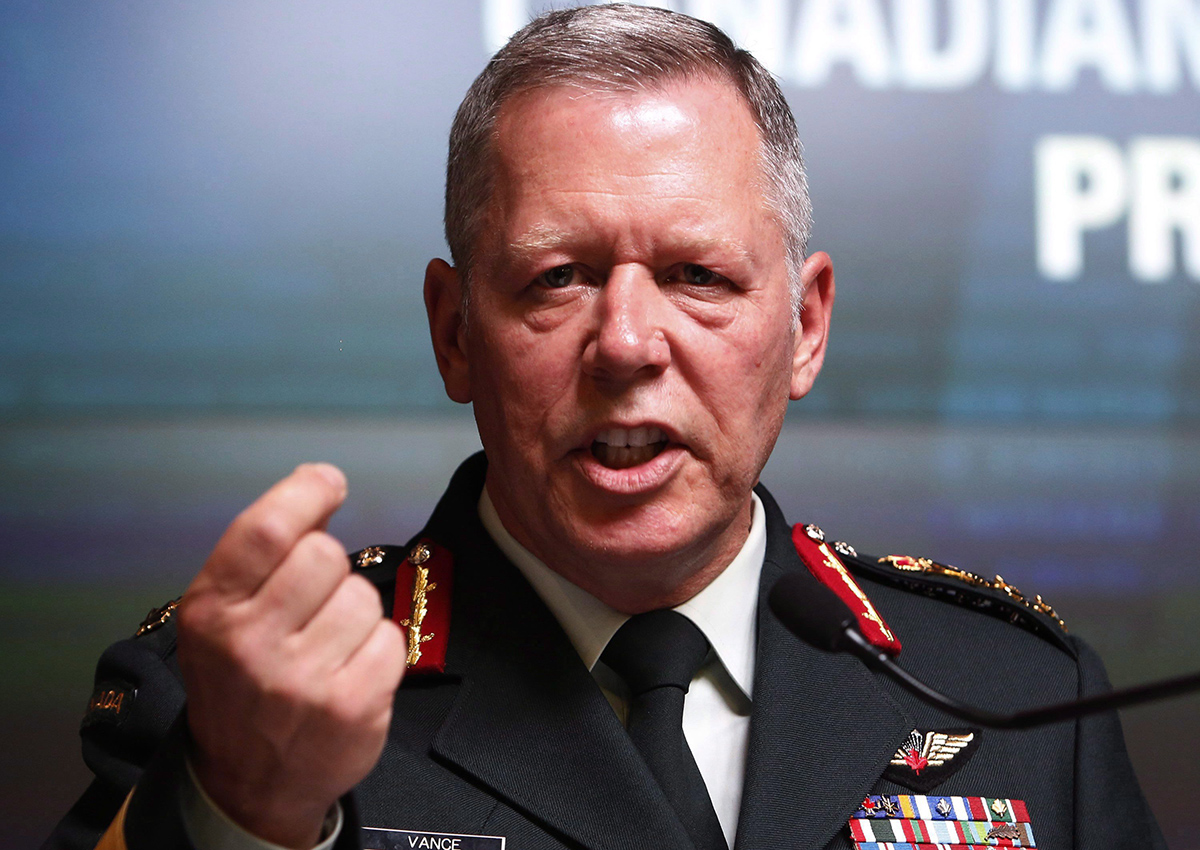OTTAWA – Defence chief Gen. Jonathan Vance says the Canadian-led NATO force in Latvia is starting to take shape, with several countries having expressed an interest in contributing troops and equipment.

Speaking to The Canadian Press following a two-day visit to Latvia, Vance said the job now is to match up what other countries are willing to provide with what is actually needed to field the 1,000-strong battle group.
“We’re on the right track, and we’re on track,” Vance said from Croatia on Saturday, where top military officers from across NATO were meeting.
“There’ll be all sorts of international phone calls made and working groups struck to get to this final state.”
Among the countries that have indicated their willingness to participate are Italy, Poland, Slovenia and Spain. Each sent representatives on a Canadian-led reconnaissance mission to Latvia last month to get a feel for the situation on the ground.
READ MORE: NATO allies welcomed to Halifax for multinational naval exercise
Italian Ambassador to NATO Claudio Bisogniero confirmed on Twitter on Friday that his country will make a “significant contribution” to the battle group.
Vance said the more NATO members that contribute to the four battle groups the more likely they are to dissuade Russia from taking any aggressive action in the region.
The Liberal government announced in July that Canada would lead one of four multinational NATO forces in Eastern Europe, where the military alliance has been beefing up its presence in response to recent Russian actions.
WATCH: Donald Trump now claims he will work with NATO to defeat ISIS

Germany, the United States and Britain are leading similar forces in Lithuania, Poland and Estonia, respectively.
Canada will contribute just over 450 troops to the battle group. Vance could not say which specific units would be tapped, but they will include a commander and headquarters staff, military police, logistical and communications support, as well as an infantry company with light armoured vehicles.
The Canadians will form the “nucleus” of the battle group, which will be based at the Adazi military base, about half an hour northeast of the capital Riga. The first troops will arrive in the spring, but the bulk won’t touch down until fall. They will stay six months, before another group of Canadians replaces them.
READ MORE: No hard target set for Canadian fighter jets to meet NATO commitments: report
One potential challenge is making sure the required infrastructure is ready when the battle group begins to arrive. That includes barracks for the troops and hangars for storing and repairing vehicles. As the host nation, Latvia, which has a tiny military, is responsible for making such preparations.
Vance said he had reviewed the Latvians’ plans, and that work was already underway.
“They’ve broken ground,” he said, “and they’re working furiously at making this happen to meet the timelines.”
There have also been concerns that the Canadian military will be stretched too thin, particularly in terms of resupply lines, by conducting three missions in different parts of the world at the same time.
Aside from Latvia, there are currently about 800 military personnel in the Middle East participating in the American-led fight against the Islamic State of Iraq and the Levant. The Liberal government has also promised up to 600 troops for peacekeeping operations in Africa.
READ MORE: Canada and NATO: Details on Eastern Europe military commitments
“My level of comfort is very high as to where we’re at,” Vance said when asked about logistical challenges. “We’ll have a footprint in Europe. I’m very comfortable we’ll meet that. A footprint in the Middle East. We’re meeting that just fine. And we have the capability to open and maintain another theatre or two.”
Eastern Europe allies asked NATO to bolster its presence in the region as a deterrent against Russia trying to destabilize them in the same way it did in Ukraine. That includes crossing into their territory, inciting Russian speakers within their borders and cyber attacks.
Russia has denied any such intentions, and instead accused NATO of instigating the current standoff by expanding into former Soviet territory and trying to undermine its sphere of influence. It has also warned against any military build-up on its borders.
The four battle groups are intended to send a “firm signal” to make Russia think twice before taking any aggressive action, Vance said. But they are also “modest” to prevent any provocation or escalation in tensions between Russia and NATO.



Comments